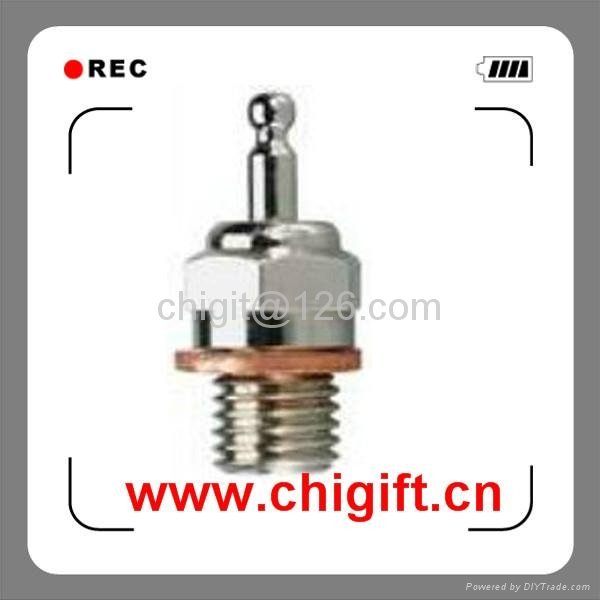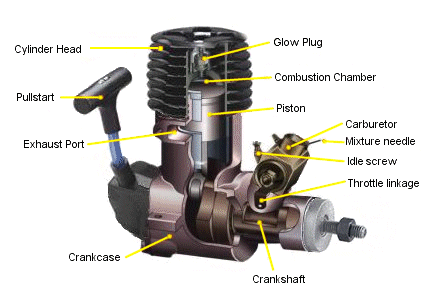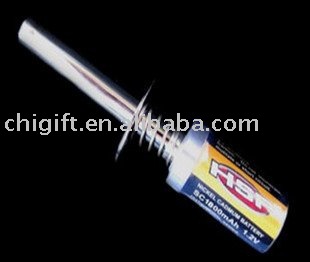Kaito
Orbiquiz Coordinator
- Joined
- Jul 24, 2008
- Messages
- 857
- Reaction score
- 0
- Points
- 0
I guess I should start at the beginning...
I was looking up some rocketry videos on youtube, and came across the "fire in a jar" trick: put some ethyl alcohol in a 5 gallon water jug, vaporize (just shake it around), and drop a match in. It makes a giant woosh. I've seen this before, but watching it again made me think of wanting to try it. Eventually I tried it with a beer bottle...and it didn't make the woosh I was hoping for. But anyway, I was wondering if I could obtain any thrust from something like this. All rocket have their exhaust pointing down, so I would need to figure out a way to point it down, but have the contents not spill out...
I started talking with T.Neo about this, and after about 2 weeks of squabbling about injector designs, heat capacity, and structural integrity, I believe we have settled on a design capable of being built. The design I will be going off of is this, 95% accurate (very minor details need to be changed/were too hard to achieve in Wings3D), scale model of the engine. All that is not included is the throat and nozzle, which I consider to be trivial: http://imageshack.us/f/4/enginedetailed.jpg/
Color codes:
Working out the Injector:
This had to be one of the hardest things to do. At first, I was thinking of just having two holes where I would inject my propellants, but T.Neo insisted on having them mix properly. We both made injector designs, and we didn't like each others. Eventually, T.Neo said "well, why not combine the best of both" (paraphrased), which is how I came up with this design. T.Neo did help with functionality adjustments. The spike at the very bottom of the blue tube is to help with deflecting the propellant down and out.
When I was modeling that picture, it occurred to me that there would be no effective way of injecting a propellant into the green tube. What I decided on doing is having 4 tubes project from it, and hand make an adapter (probably using rubber tubing and a fitting) to connect to the propellant tank. The blue tube would just be connected to a hose to the other tank. If anyone has any suggestions/constructive criticism to this design, please voice your opinions before I start constructing it.
Construction Methods/Structural Integrity
This was almost as painful for T.Neo and I as was building the Injector. I was not very worried about the structural Integrity of the chamber, but T.Neo was worried about it going up like a bomb. Here is MY planned construction method/materials:
I am not an expert welder/machinist, but I feel like this would be a good introduction to both of them while still having a cool project to do.
Performance Expectations
In order to make things simple, I decided to shoot for as much thrust as I could possibly get. Fuel efficiency does not mean much to me, as the fuels I'm using are relatively cheep, and fairly accessible. This being said, I am going to am for an absolutely outstanding and amazing thrust of:
1 Newton
If I can achieve even this minimal amount of thrust, I will be amazingly happy, and consider this engine a success. Anything over 1 Newton will be icing on the cake. I will always aim for more, but 1 is my goal.
For most of the controlled, scientific tests, I would have a burn time of about 5 seconds. This number is arbitrary, and I would happily change it if someone sees a concern. I feel this number would allow the chamber to feel the full stress, and thus any longer would mean minimal chance of failure.
Things not shown
There are some thing I did not include in this model, as I was mainly focusing on the engine. I did not show:
I feel like T.Neo and I have gotten to a good point in the design, but there are still some things that I am not clear on, or would like a second opinion or suggestion.
Any suggestions would be appreciated. I plan to take pictures during the various construction phases and post them here, so you all can see how I'm doing. My first plan is to build either a prototype injector, or the actual injector, and test it with propane and compressed air (to simulate the O2), and use an open flame as an ignition source.
Be back here soon (hopefully)
~Kaito
I was looking up some rocketry videos on youtube, and came across the "fire in a jar" trick: put some ethyl alcohol in a 5 gallon water jug, vaporize (just shake it around), and drop a match in. It makes a giant woosh. I've seen this before, but watching it again made me think of wanting to try it. Eventually I tried it with a beer bottle...and it didn't make the woosh I was hoping for. But anyway, I was wondering if I could obtain any thrust from something like this. All rocket have their exhaust pointing down, so I would need to figure out a way to point it down, but have the contents not spill out...
I started talking with T.Neo about this, and after about 2 weeks of squabbling about injector designs, heat capacity, and structural integrity, I believe we have settled on a design capable of being built. The design I will be going off of is this, 95% accurate (very minor details need to be changed/were too hard to achieve in Wings3D), scale model of the engine. All that is not included is the throat and nozzle, which I consider to be trivial: http://imageshack.us/f/4/enginedetailed.jpg/
Color codes:
- Red is combustion Chamber, imagined to be 2 mm thick aluminum piping
- Blue and Green together represents the Injector, which propellant goes through will be determined later
- The cyan piping around the chamber is piping that will carry water (in order to help with cooling). It is impossible to see in the picture, but they are in a spiral shape
- The yellow jacket around the outside is an unspecified material that would serve two functions: Pressure resistance (in case the chamber wants to rip itself apart) and to also possibly aid in cooling, depending on it's material
Working out the Injector:
This had to be one of the hardest things to do. At first, I was thinking of just having two holes where I would inject my propellants, but T.Neo insisted on having them mix properly. We both made injector designs, and we didn't like each others. Eventually, T.Neo said "well, why not combine the best of both" (paraphrased), which is how I came up with this design. T.Neo did help with functionality adjustments. The spike at the very bottom of the blue tube is to help with deflecting the propellant down and out.
When I was modeling that picture, it occurred to me that there would be no effective way of injecting a propellant into the green tube. What I decided on doing is having 4 tubes project from it, and hand make an adapter (probably using rubber tubing and a fitting) to connect to the propellant tank. The blue tube would just be connected to a hose to the other tank. If anyone has any suggestions/constructive criticism to this design, please voice your opinions before I start constructing it.
Construction Methods/Structural Integrity
This was almost as painful for T.Neo and I as was building the Injector. I was not very worried about the structural Integrity of the chamber, but T.Neo was worried about it going up like a bomb. Here is MY planned construction method/materials:
- The chamber WALLS would be made of aluminum, with the top cap probably steel
- The blue, green, and cyan pipes would be made of copper
- The yellow shell would either be made of PVC pipe (for nice pressure resistance) or a nice metal tube (not sure of the type of metal, all depends on what I can find for cheep)
- The BLUE and GREEN tubes would be connected only at the top through welding/brazing. That would be it's only connection point
- The GREEN and RED parts would be connected through threads, with a washer and nut on both sides to aid in support. I have the ability (mechanically, not skillfully yet) to cut both male and female threads, so hand making nuts and washes would not be a major concern to me.
- The RED top cap and sides would be connected by having the top cap have flaps that fold over the sides, and then use bolts or screws to fasten them together. I also am thinking of using epoxy around the edges to make it air tight
- the CYAN and RED parts would be connected at every accessible point by either epoxy, or welding, assuming they want to weld (I've heard that welding aluminum to other metals is quite hard)
- The CYAN tubes would be connected to each other through vertical "beams" of welds
- the YELLOW jacket wouldn't be fastened to the structure at all; it would either be mounted to the test stand, or just placed over the engine
I am not an expert welder/machinist, but I feel like this would be a good introduction to both of them while still having a cool project to do.
Performance Expectations
In order to make things simple, I decided to shoot for as much thrust as I could possibly get. Fuel efficiency does not mean much to me, as the fuels I'm using are relatively cheep, and fairly accessible. This being said, I am going to am for an absolutely outstanding and amazing thrust of:
1 Newton
If I can achieve even this minimal amount of thrust, I will be amazingly happy, and consider this engine a success. Anything over 1 Newton will be icing on the cake. I will always aim for more, but 1 is my goal.
For most of the controlled, scientific tests, I would have a burn time of about 5 seconds. This number is arbitrary, and I would happily change it if someone sees a concern. I feel this number would allow the chamber to feel the full stress, and thus any longer would mean minimal chance of failure.
Things not shown
There are some thing I did not include in this model, as I was mainly focusing on the engine. I did not show:
- The propellant tanks
- The throttling mechanism (a simple way to control both propellants at once, allowing for a fast shut off)
- The igniter
- The throat/nozzle
I feel like T.Neo and I have gotten to a good point in the design, but there are still some things that I am not clear on, or would like a second opinion or suggestion.
- The throttle control. I'm mostly looking for a second opinion on this, but my idea is to have two valves along the hoses from the tanks to the injector. The throttle would just be a lever, connected via cables or some other mechanical connection, that would allow the turning of both valves simultaneously.
- Connecting the top of the chamber to the sides. I need a second opinion/full design on this one. T.Neo is worried about the steel screws mounting the two together becoming overheated and losing their structural integrity. I do not think it will be a problem for the 5 second test, but I'm just not sure. I'm also slightly worried that the epoxy used to create an airtight seal wont be able to withstand the heat, but I'm not an expert on that.
- The igniter. I need a full design on this one. I have salvaged a piezoelectric contraption from a lighter (ones used to light charcoal grills), and I was thinking of using it for an ignition source. My idea would be to connect it to a transformer to step up the voltage to create a nice spark (the current one is weak), and have a piston/motor contraption push the button in a regular and repeating fashion. I would then run wires up into the chamber, and cleverly place them so that they would ignite the propellants, and hopefully then the reaction is self-sustaining. I know I would lose my wires, but I cannot think of another way that would be cheep and simple. I do not wish to drill another hole in my chamber, but if I must, I will.
- Test stand design. I just haven't thought about it much, so I am open to all ideas. My basic requirements are, however: Easy way to mount a water jug on top (in order to have water flow through the piping), cheep construction materials, and a place where I can place weights on it to prevent it from taking off (I know it won't, but I would feel safer)
Any suggestions would be appreciated. I plan to take pictures during the various construction phases and post them here, so you all can see how I'm doing. My first plan is to build either a prototype injector, or the actual injector, and test it with propane and compressed air (to simulate the O2), and use an open flame as an ignition source.
Be back here soon (hopefully)

~Kaito
Last edited:





 , DON'T! :facepalm:
, DON'T! :facepalm: